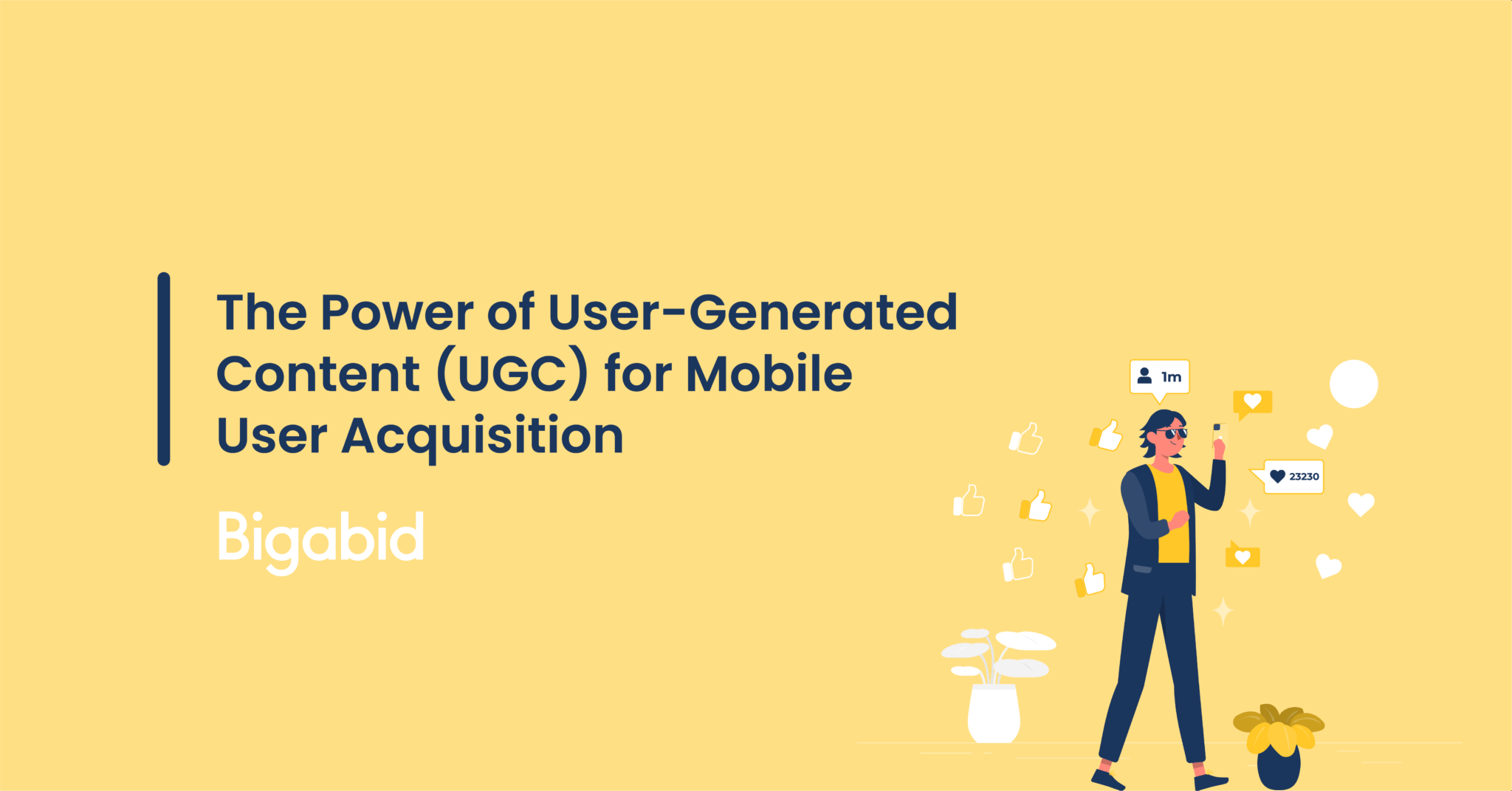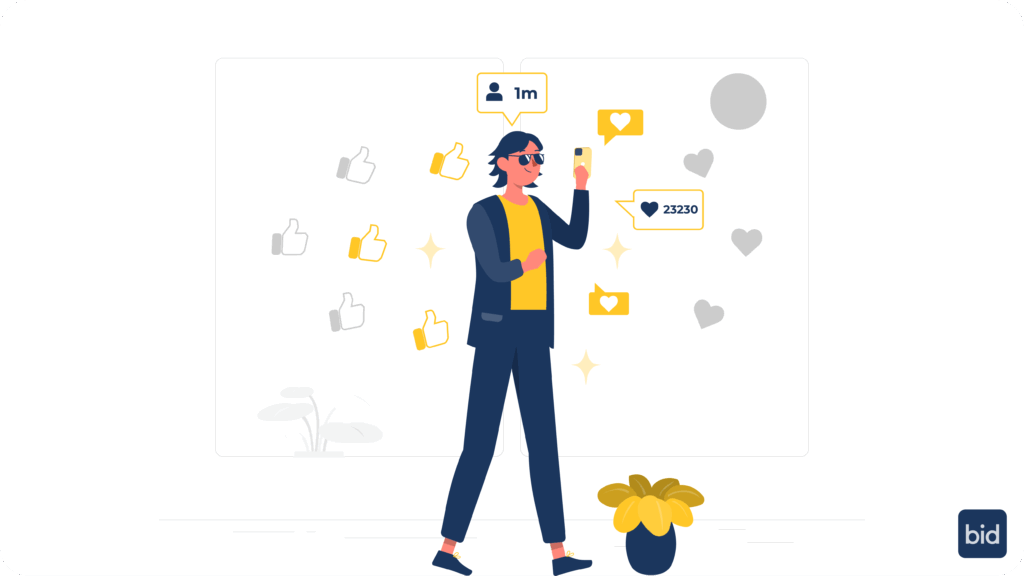
The competitive landscape of mobile app and game advertising is more intense than ever. With millions of apps available in app stores and billions of dollars being spent on mobile advertising annually, standing out requires a strategic edge. One proven method that’s reshaping mobile user acquisition (UA) is User-Generated Content (UGC).
For mobile marketers, UA managers, and advertisers, leveraging UGC is no longer a mere option; it’s a necessity. But what makes UGC such a powerful tool for mobile user acquisition? And how can mobile marketers incorporate UGC into their campaigns effectively? This blog dives deep into the world of UGC and its applications in mobile advertising, offering you actionable insights and strategies.

User-Generated Content refers to any form of content created by users, not brands. This encompasses photos, videos, reviews, social media posts, blog articles, and more.
Think of a TikTok video showcasing gameplay, an Instagram post of someone using a fitness app, or a YouTube review raving about your mobile app. All of these are examples of UGC that can drive mobile user acquisition when used strategically.
UGC works because it feels authentic. Unlike polished brand advertisements, UGC reflects genuine user experiences and fosters trust. For mobile game marketing and app marketers, this authenticity translates into higher engagement rates, better retention, and lower cost-per-acquisition (CPA).
For the Wizards!
At a technical level, the true power of UGC in mobile UA emerges when it is ingested, categorized, and programmatically deployed via real-time bidding (RTB) environments. High-performing UGC assets are first vectorized through multimodal embedding models, allowing systems to extract semantic, tonal, and behavioral signals from video, audio, and text inputs. These embeddings are then mapped to user-level affinity clusters using probabilistic user modeling and attention-weighted graph neural networks (GNNs), which predict likely engagement outcomes across cohorts. Bigabid’s AI-enhanced DSP continuously trains on these feedback loops, applying reinforcement learning to adapt bid modifiers, creative permutations, and delivery frequency based on shifting user response curves. Additionally, creative-level A/B testing is accelerated using evolutionary algorithms that generate micro-variants of UGC ads, scoring them against KPIs like CPI, ROAS, and post-install events. The result is a closed-loop system where user sentiment is not only captured—but algorithmically redeployed to maximize resonance, precision, and performance at scale.

Effective UA strategies are about creating meaningful connections with potential users. Here’s how UGC plays a vital role:
Traditional advertisements often fall flat due to skepticism from mobile users. UGC, on the other hand, resonates because it’s created by actual users. Potential customers are more likely to trust what other users say about your mobile app or game than any branded message.
Thus, well-curated UGC becomes the voice of real people endorsing your app, creating deep emotional connections with prospects.
When UGC is incorporated into Mobile Advertising, it speaks directly to your audience’s emotions, influencing their purchasing behavior. According to surveys, 79% of people say user-generated content significantly impacts their purchasing decisions. This is especially powerful for mobile game advertisers targeting niches like competitive gaming or casual mobile players.
Creating quality branded content can be expensive. With UGC, you’re leveraging the creativity and enthusiasm of your users. By repurposing content your user base is already creating, you reduce your creative production costs while enhancing your user acquisition efforts. It’s a budget-friendly approach that delivers high ROI.
UGC doubles as social proof. Reviews, testimonials, and player videos build credibility around your app. This positive word-of-mouth drives organic installs while bolstering trust among hesitant users.
Today’s demand-side platforms (DSPs) allow you to strategically incorporate UGC to reach specific audience segments. Tailor UGC creatives to match the preferences of your target user base, whether it’s parents looking for educational apps or Gen Z players seeking the next viral mobile game.
Discover more about Creative Personalization.

UGC is versatile and can be used in various ways to supercharge UA campaigns. Here are some key applications for mobile marketers:
Social media platforms are the heart of UGC. Encouraging users to share their experiences on TikTok, Instagram, or Snapchat can create wide-reaching organic buzz. For example:
Integrate UGC into your ad campaigns. Showcase short, real-life clips or testimonials from happy users. These ads often outperform traditional ones because they feel less “salesy.” User-generated video works particularly well for mobile game marketing, offering a glimpse into the actual gameplay.
Learn more about Ad Creative for Mobile Gaming with AI.
Collaborate with influencers who can create UGC-style posts. Influencer-generated content doubles as UGC and reaches a wider audience. Gen Z, in particular, trusts influencers and is more likely to download apps they recommend.
Create online spaces where your users can share experiences and content. Whether it’s a Discord server for mobile gamers or a Facebook group for fitness app users, cultivating community generates a flow of high-quality UGC while keeping the audience engaged with your brand.
Modern Demand-Side Platforms (DSPs) allow for innovative use of UGC. By leveraging AI-driven capabilities through DSPs, you can:
UGC isn’t just for acquiring new users. It’s an excellent resource for bringing back dormant users. Include reviews, social proof, or user-created tutorials in re-engagement campaigns via email, push notifications, or in-app messages.

To guarantee the success of your UGC marketing campaign, follow these best practices:
Different types of UGC perform better on different platforms. TikTok and Instagram thrive on short, creative video clips, while detailed user reviews might work better on YouTube or blog platforms.
All content isn’t created equal. Ensure that the UGC aligns with your brand voice and target audience preferences. Use only high-quality images and well-edited videos to maintain credibility.
The best UGC is rooted in real user stories that reflect specific pain points your app solves. For example, if promoting a meditation app, showcase a personal video explaining how it helped reduce stress after work.
Whether you’re running ads via Facebook, Google Ads, or through a Demand-Side Platform, always test UGC formats to figure out what works best across channels.
Ease of contribution is important. Incentivize your users to participate by offering rewards like discounts, exclusive in-app perks, or shoutouts on your social media.

To measure the impact of UGC in your mobile marketing campaigns, monitor the following:
User-generated content is not just a buzzword; it’s a proven tactic for cutting through the noise in today’s crowded app marketing ecosystem. Whether you’re focused on mobile game marketing, advertising an app through a DSP, or looking to create a standout social campaign, UGC provides a blend of authenticity, engagement, and cost efficiency.
At a time when users are craving genuine, relatable brand interactions, harnessing the power of UGC could be the game-changer your mobile user acquisition strategy needs.
At Bigabid, we know that the best campaigns don’t just speak at users—they speak through them. That’s why we empower app marketers to seamlessly integrate user-generated content into high-performing, AI-powered campaigns. From identifying top-performing UGC creatives to optimizing delivery across programmatic channels, our platform is designed to make authentic content work harder and scale faster.
If you’re ready to turn UGC into a sustainable, ROI-driven user acquisition strategy, we’d love to show you how.
Get in touch to grow your app with the voices your users trust most.